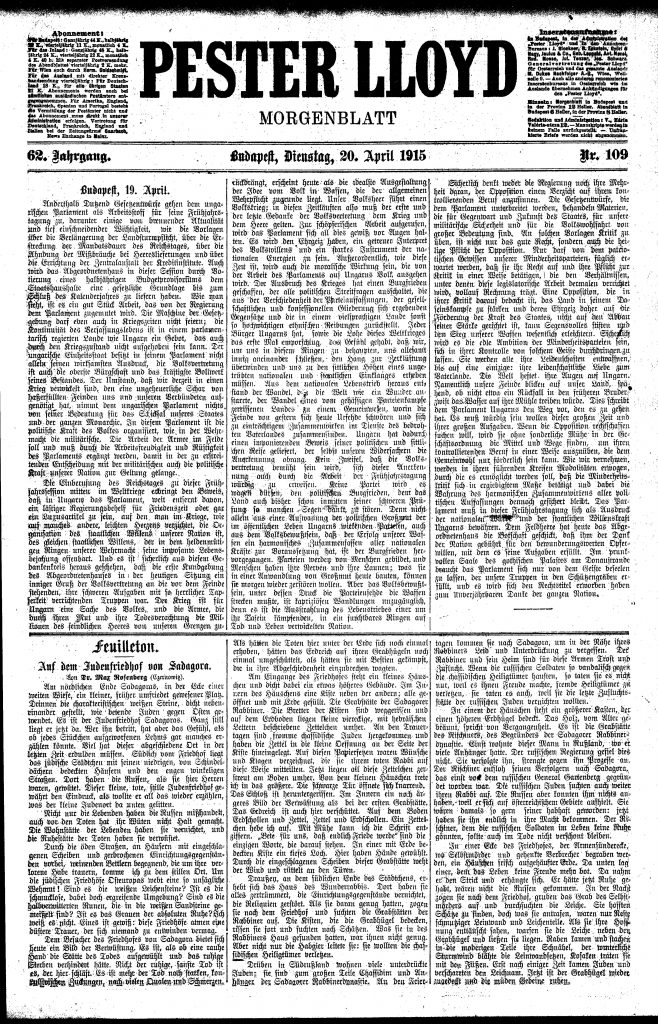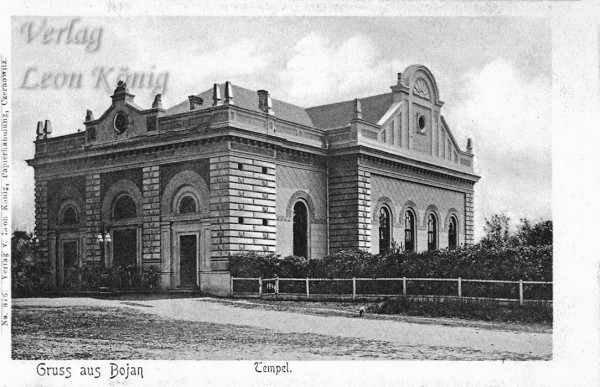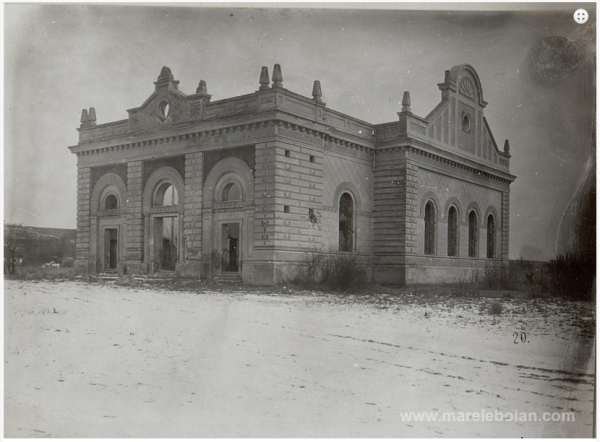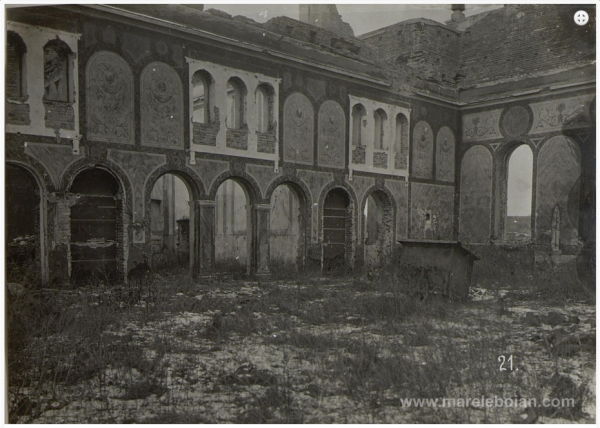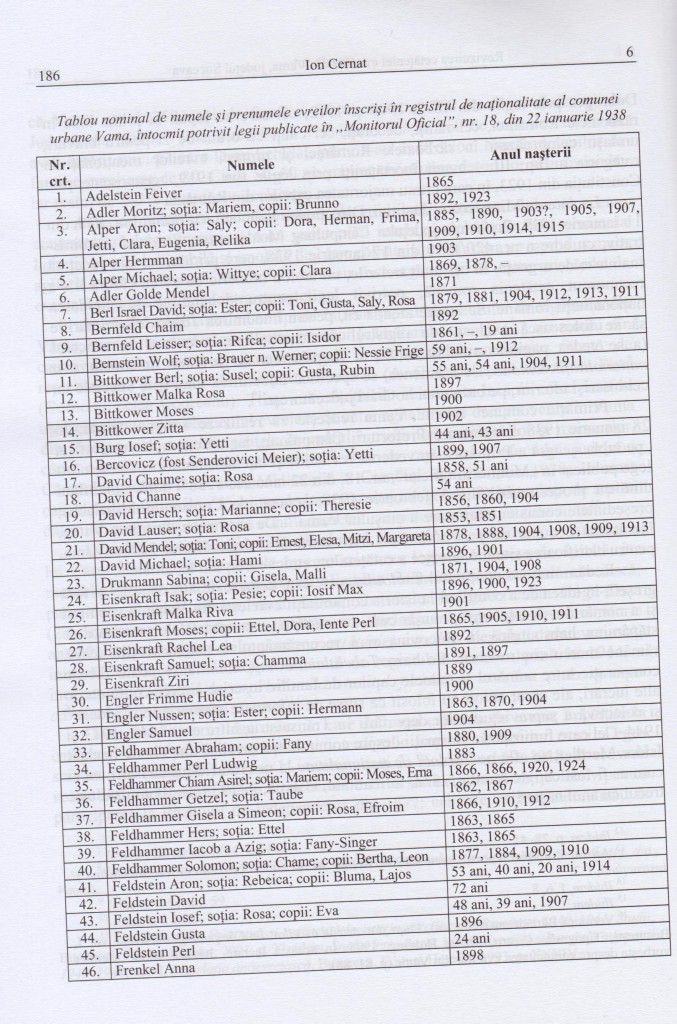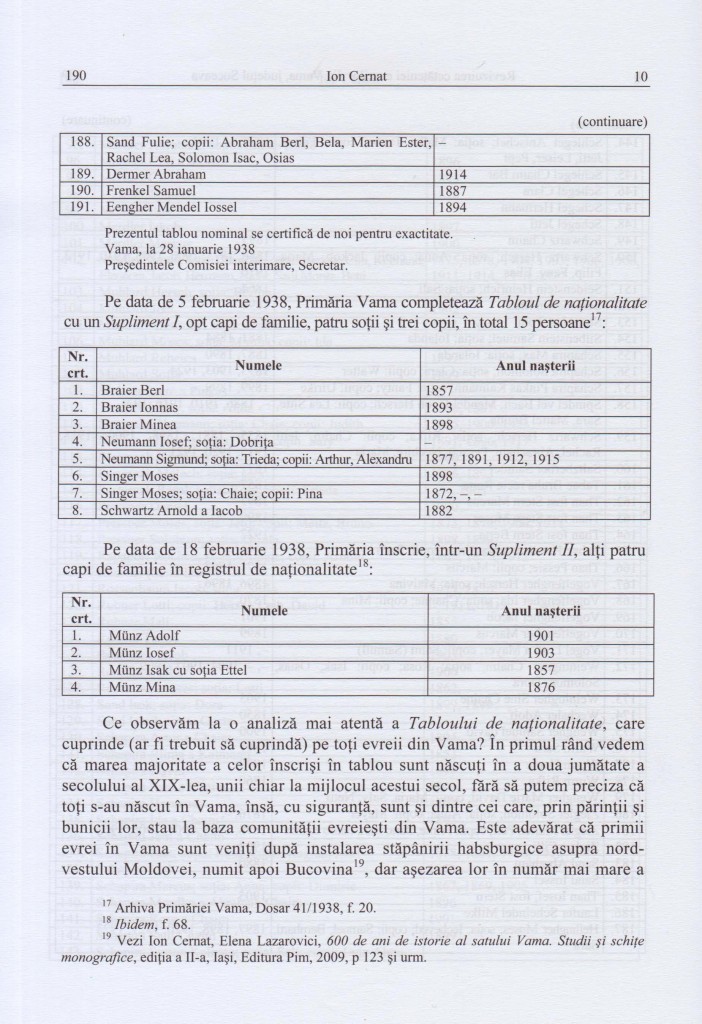Hi all, i am currently worlking on a Research paper on Czernowitz Jewish academic fraternities. With “Hasmonäa”, founded 1891 by members of the Viennese “Kadimah”, this new type of Jewish academic fraternity appeared in Czernowitz and found successors throughout the German-speaking Universities. The Jewish academic fraternities were modeled after the traditional type of “Studentenverbindung”, that existed in Czernowitz from 1875-1938/40. The members of the various “frats” distinguished themselves by wearing ribbons and caps showing the club colors of their fraternity. In the Romanian period the University organisation was changed to the “college System” and members of the fraternities were issued membership cards. here i have got one issued by JNAV “Heatid” for Josef Stark in 1922. “Heatid” came into being in 1918/19 and existed until 1936. Its club colors used to be green-silver-black shown in the ribbons with white caps. Any further information on “Heatid”, Josef Stark or any of the Czernowitz fraternities – especially photographs – would be highly appreciated. Thank You!
Category Archives: Bukovina
At the Jewish Cemetery of Sadagora
![]()
“Bukovina is in every sense a paradox. Everything is upside down here. It almost seems as if this topsy-turvy element had to belong to the nature of this land, as if its character was to consist of this. Everyone feels that Bukovina is something special, not to be put on a level with the other crownlands and that its cultural ties also have a certain nuance of their own, something different from the ordinary. Yet, they only feel. What this character is, however, very few have so far attempted to fathom.”
This is a citation of Dr. Max Rosenberg from Czernowitz from the year 1914, preposed by H. F. van Drunen to his thesis “‘A Sanguine Bunch’ – Regional Identification in Habsburg Bukovina, 1774-1919” (Book of the Month, January 2015):
http://czernowitzbook.blogspot.de/2015/01/a-sanguine-bunch.html
One year later, in 1915, under the impression of the devastations caused during the Russian occupation, Dr. Max Rosenberg is visiting the Jewish Cemetery of Sadagora and his impressive report – see above – was published by the prestigious “Pester Lloyd” from Budapest on April 20, 1915:
Auf dem Judenfriedhof von Sadagora. Von Dr. Max Rosenberg (Czernowitz).
Am nördlichen Ende Sadagoras, in der Ecke einer weiten Wiese, ein kleiner, früher umfriedet gewesener Platz. Drinnen die charakteristischen weißen Steine, dicht nebeneinander gestellt, wie betende Juden gegen Osten gewendet. Es ist der Judenfriedhof Sadagoras. Ganz still liegt er jetzt da. Wer ihn betritt, hat aber das Gefühl, als ob jedes Stückchen aufgeworfenen Lehms gar manches erzählen könnte. Viel hat dieser abgeschiedene Ort in der letzten Zeit erdulden müssen. Südlich vom Friedhof liegt das jüdische Städtchen mit seinen niedrigen, von Schindeldächern bedeckten Häusern und den engen winkeligen Straßen. Dort haben die Russen, als sie hier Herren waren, gewütet. Dieser kleine, tote, stille Judenfriedhof gewährt den Eindruck, als wollte er all das wieder erzählen, was der kleine Judenort da unten gelitten.
The Mysterious House of Radauti
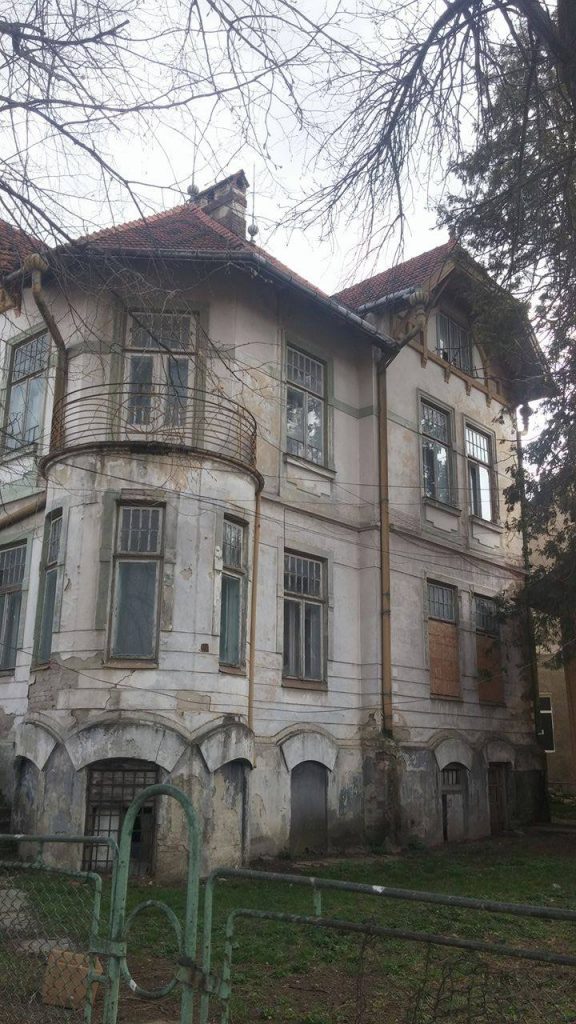
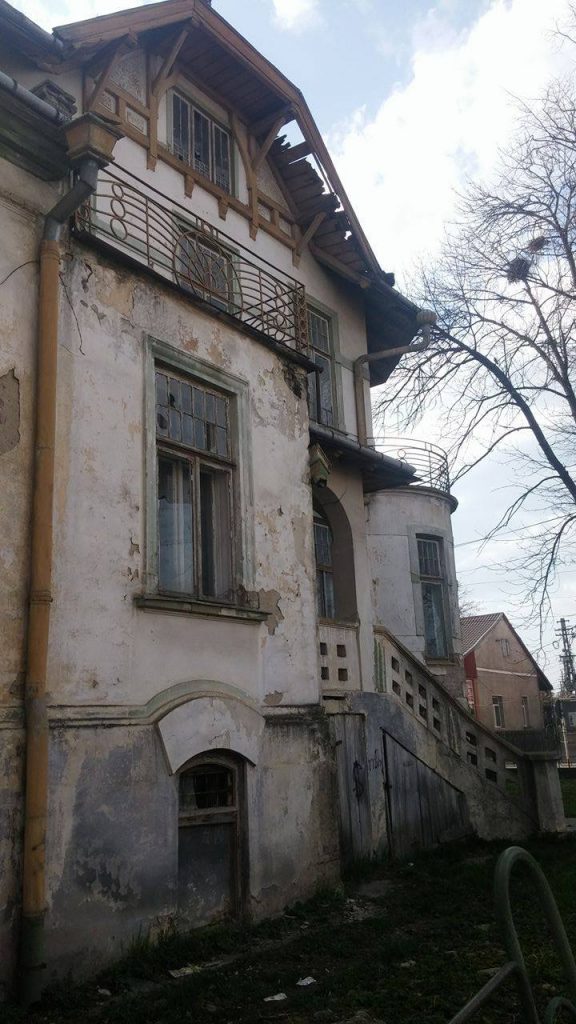
 Dear all, I’m looking for few details about a house in Radauti. Only few things I discover. The house is on Kirchengasse street in Radauti. In 1938 used to live in that house 2 families, Rebeka the daughter of Joel David and Puskas Postilniuk. Since 1959 once the colectivization settle in Romania, the house was in the state property as a part of agricuture minister. Maybe someone knows the person, or maybe the house. We are working on a project which include the rehabilitation of the house and transforming it into a museum, The Minorities Museum From Bucovina. Alexandra Nichitean
Dear all, I’m looking for few details about a house in Radauti. Only few things I discover. The house is on Kirchengasse street in Radauti. In 1938 used to live in that house 2 families, Rebeka the daughter of Joel David and Puskas Postilniuk. Since 1959 once the colectivization settle in Romania, the house was in the state property as a part of agricuture minister. Maybe someone knows the person, or maybe the house. We are working on a project which include the rehabilitation of the house and transforming it into a museum, The Minorities Museum From Bucovina. Alexandra Nichitean
Please come back with details to: alexa.nichitean@gmail.com
The Liberation of Bukovina – The Capture of Czernowitz (1917)
General Eduard von Böhm-Ermolli at his command post; briefing with Austrian officers at the map table [00:10]; destroyed bridges over the Pruth before Czernowitz [02:11]; Austrian troops bivouac on the banks of the Pruth [03:04]; horsepond [03:49]; Czernowitz after being taken on 3rd August 1917: burning railway station building and burning crossties [04:37]; destroyed dome of the railway station [05:50]; ruins of houses [06:23]; the fire brigade extinguishing flames [07:14]; children in the city streets [07:25]; Austrian troops march past Archduke Franz Joseph on 4th August 1917 in Czernowitz [07:42].
Source: EFG european film gateway & filmportal.de
In Search of the Synagogue of Boian in Bukovina
Florin Dyrda from Boian, a graduate of the Chernivtsi National Yuri Fedkovych University both in history as well as in computer systems and networks, is the creator/webmaster for a huge number of websites related to the history of Boian. A couple of days ago Florin drew our attention to his posting (in Romanian laguage) on the former Synagogue of Boian, erected at the end of 19th century and destroyed by the Russian Cossacks during WW1. Florin’s fine investigative skills led to this detective work:
http://www.mareleboian.com/lacasuri-sfinte/sinagoga-evreiasca/
In addition a list of Jews from Boian, compiled by Prof. Vasile Bizovi, is available at the site above and can be downloaded by clicking here. No doubt about, Florin’s perception of history is from a Romanian angle of view, but his websites focussed on history, churches/synagogies, schools, traditions, today’s life, photos, videos and events offer a wealth of material around Boian. Don’t miss Florin’s links/websites:
Boian Map Room: http://www.mareleboian.com/istorie/imperiul-austro-ungar-1775-1918/harti/
Museum of Boian in Alberta/Canada (English): http://www.boianalbertamuseum.com/
Bukovina Open Air Museum (English): http://bukovina-museum.com/en/
Meyer Ebner on Leibu Levin – 1935
From Ruth Levin, an article from the “Ost-Yiddishe Zeitung”, 2.6.1935:
“…Dr. Landau introduced to the audience a young man whose name
should not be forgotten. Probably, we’ll hear from him again and again.
Levin isn’t a singer, rather he’s an artistic reader. He’s not a reader, rather
he’s an actor. As a matter of fact he’s all in one: singer, artistic reader, actor
and poet. Why also poet? He reads to us only the poems of others, does he not?
That being so, this is the secret of his art. He reveals what is hidden between the lines.
He brings the poet to completion. He draws from the poet’s soul riches the poet himself
did not know of, riches that were hidden in his sub-conscious…
Frequently the words of the text in his mouth serve solely as a stimulus that awakens –
just for a passing moment – the poetic spiritual inheritance of his own, and that has
always to be born anew, like the music.
The art of Leibu Levin needs not only to be heard, though, but also to be seen. He himself
one has to hear and see, how he breathes into the dim hall, into the pearls of strangers’
poetry, his young burning soul, the creative, sometimes ecstatic, and sometimes weeping
soul… His profound understanding drew one deeply into the fables of
Eliezer Steinbarg and the ballads of Itzik Manger.
From time to time the reader becomes singer, and only when he was seen as well as heard,
did I finally understand the meaning of the old expression “to sing and to say”
regarding troubadours and minnesingers. When his spoken word passes to song, it reminds me
of a flying ship hovering above the earth and taking off to the blue heavens…
Talent is as rare as gold. From the gold it is possible to forge a holiday crown for
priests who serve gods and it is possible to pay with it the penance for sinful impurity…
Talent can be refined to capture surpassing art, or can descend to cheap popular
entertainment. It seems to me that all in Leibu Levin aspires toward and is uplifted to the
shining heights of noble art .”
Dr. Meyer Ebner
The newspaper “Ost-Yiddishe Zeitung”, 2.6.1935
Bukovina History Conference – at the Hebrew University of Jerusalem
Thank you Irene Fishler for supplying a Hebrew language brochure (below) describing the conference coming up on March 15, 2016. The organizer’s contact information may be found a the bottom of this page:
Dr. Ronit Fischer
Center for Jewish History
We are honored to invite you to a convention entitled:
Society and History of Bukovina
The “Multi-Kulti” district of Rumania
on
March 15, 2016
Room 15, Meyersdorf building
Mount Scopus
Jerusalem
9:00-9:30 coming together and refreshments
9:30-10:00 greetings
- Professor Uzi Rebhun, Director of the Center for Research on Romanian Jewry
- Mrs. Andreea PăstârnacAmbasador of Rumania in Israel
- Professor Dror Wahrman, Dean of Humanities at the Hebrew University of Jerusalem
- Mr. Micha Harish, Chairman of the AMIR organization.
- Dr. Sa’ar Pauker, representative of the Pauker family.
10:00-11:15 First Session
Bukovina as a Symbol for Multi-Culturalism
Chairman: Professor Daniel Blattman Hebrew University
- The Jews of Bukovina as a symbol for Romanian heterogeneity in the inter-war period
Dr. Ronit Fischer, Hebrew and Haifa Universities. - To describe and imagine Czernowitz – Professor Ya’avetz and his town.
Dr. Rafael Vago, Tel Aviv University - Back to Czernowitz, a paradox of memory and nostalgia – a historic-anthropologic approach.
Dr. Florence Heyman, The French Research Center in Jerusalem. (CNRS-NAE).
11:45 – 13:30 Second Session
A Small District – Many Worlds of Multi-Cultural Creativity
Chairman: Dr. Amos Goldberg Hebrew University
- What happens to the multicultural character of Bukovina after the holocaust? Paul Celan Dan Pagis, and Aharon Appelfeld. Sidra de Koven-Ezrahi, The Hebrew University.
- The Jewish theater of Czernowitz during the transition between Romania and the Soviet Union.
Ms. Dafne Dolinko The Hebrew University and Yad Va’Shem. - “My Bukowiner”. The writer Nava Semel returns to the lives of her grand parents and to the place where her family originated.
Organizer: Dr. Ronit Fischer
Participation and Exclusion by Dr. Markus Winkler (Editor)
The Jews of Vama as per January/February 1938
Czernowitz – Stadt der Dichter [City of Poets] by Amy-Diana Colin & Edith Silbermann
![]()
Amy-Diana Colin’s (PhD, Yale) much-anticipated book “Czernowitz – Stadt der Dichter [City of Poets]”, the “History of a Jewish Family from Bukovina (1900-1948)” is now at the bookseller’s!
What a literary delectation, something for winter’s eve, but not only! From the blurb we learn: “The report of an exceptional contemporary witness: Edith Silbermann, nee Horowitz, from Czernowitz (Bukovina), actress, reciter, translator, Germanist, publicist, mediator between German and Jewish cultural traditions, narrates her turbulent family history and reports on her youth in Czernowitz before and during WW2. One chapter of this book is dedicated to Paul Antschel (Celan), Edith Silbermann’s friend from the early Czernowitz years until his death. It was for both, Paul and Edith, the first love of their youth. […]”
It is not just a literary delectation, it’s also a listening pleasure, since this precious book comes with two audio CDs including recordings from Edith Silbermann’s sophisticated recitation program. Read, listen and enjoy! It’s a special publication for Czernowitz lovers!

